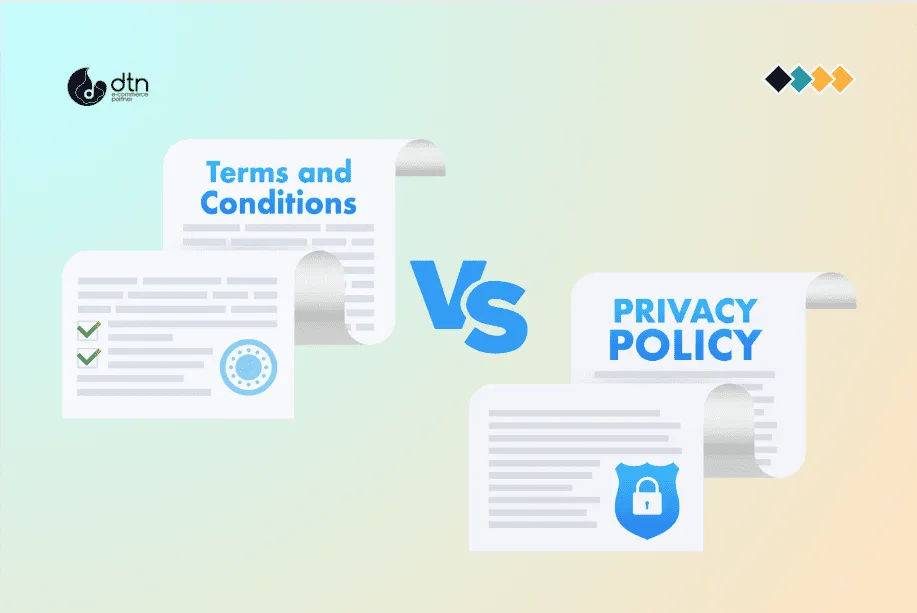In the digital age, it’s crucial for businesses to have clear and legally compliant terms of service (TOS) and privacy policies. These documents outline the rules and regulations that govern the use of your products or services and protect both you and your customers. Creating effective TOS and privacy policies can seem daunting, but it doesn’t have to be. Explore this comprehensive guide to navigate through the process effectively:
1. Understand the Purpose and Legal Requirements
Terms of Service (TOS) define the legal relationship between your business and users. They typically cover:
– Permitted uses of your products or services
– Restrictions and limitations
– Payment terms
– Termination and dispute resolution
Privacy Policy outlines how you collect, use, and share user data. It must comply with applicable laws, such as the General Data Protection Regulation (GDPR) and the California Consumer Privacy Act (CCPA).

2. Gather Necessary Information
Before drafting your TOS and privacy policy, gather the following information:
- Business Model: Describe your products or services and how they are used.
- User DatIdentify the types of personal data you collect and process.
- Legal Requirements: Research applicable laws and regulations in your jurisdiction.
- Industry Best Practices: Review TOS and privacy policies of similar businesses.

3. Draft the Content
Terms of Service
- Introduction: Clearly state the purpose and scope of the TOS.
- Definitions: Clarify essential terms utilized throughout the content.
- Permitted Use: Outline the allowed uses of your products or services.
- Restrictions: Specify any limitations or prohibitions on use.
- Payment: Describe payment terms, including fees and refund policies.
- Termination: Explain the conditions under which you may terminate user accounts.
- Dispute Resolution: Provide a process for resolving disputes.
Privacy Policy
- Introduction: State the purpose and scope of the privacy policy.
- Data Collection: Describe the types of personal data you collect and the methods used.
- Data Use: Explain how you use the collected data, including for marketing purposes.
- Data Sharing: Outline any circumstances where you may share user data with third parties.
- Data Security: Detail the actions implemented to safeguard user data from unauthorized access or breaches.
- User Rights: Explain users’ rights regarding their data, such as access, correction, and deletion.

4. Review and Revise
Once you have drafted the TOS and privacy policy, carefully review them to ensure:
- Clarity: The language is clear and easy to understand.
- Comprehensiveness: All necessary information is included.
- Legal Compliance: The documents comply with applicable laws and regulations.
Consider seeking legal advice if you have any doubts or require specific legal guidance.

5. Make it Accessible
Make your TOS and privacy policy readily available to users:
- Website: Display a link to the documents on your website’s footer or privacy page.
- Mobile App: Include a link to the documents within your app’s settings.
- Physical Documents: Provide printed copies upon request.

6. Obtain Consent
Before users can access your products or services, obtain their consent to the TOS and privacy policy. This can be done through a checkbox or click-through agreement.

7. Update Regularly
As your business evolves and laws change, update your TOS and privacy policy accordingly. Regularly review them to ensure they remain current and compliant.

Conclusion
Creating effective terms of service and privacy policies is essential for protecting your business and your customers. By following these steps, you can ensure that your documents are clear, comprehensive, and legally compliant. Remember to make them accessible, obtain consent, and update them regularly to maintain compliance and protect your users.
Frequently Asked Questions
We’ve compiled a list of answers to common questions.
Are terms of service and privacy policies legally required for all businesses?
While there is no universal legal requirement for businesses to have terms of service (TOS) and privacy policies, they are highly recommended for most businesses, especially those that operate online or handle user data. Having these documents helps clarify the legal relationship between the business and its users, as well as ensuring compliance with relevant laws and regulations.
What are some common mistakes to avoid when drafting terms of service and privacy policies?
Some common mistakes to avoid include using overly complex language, omitting important clauses or disclosures, failing to tailor the documents to the specific needs of the business, and neglecting to update them regularly. It’s also crucial to ensure that the documents accurately reflect the business practices and comply with applicable laws.
Can I use templates or generators to create terms of service and privacy policies?
Yes, there are many templates and online generators available for creating terms of service and privacy policies. However, it’s essential to customize these templates to fit the specific needs and practices of your business. Templates should be used as a starting point and modified to address the unique aspects of your products or services, data collection practices, and legal requirements.
How often should terms of service and privacy policies be updated?
Terms of service and privacy policies should be reviewed and updated regularly to ensure they remain accurate, comprehensive, and compliant with relevant laws and regulations. Changes to business practices, updates to laws, or significant developments in technology may necessitate revisions to these documents. As a general rule, businesses should aim to review and update their terms of service and privacy policies at least once a year, if not more frequently.
What should businesses do if users do not agree to the terms of service and privacy policy?
If users do not agree to the terms of service and privacy policy, businesses may choose to restrict access to their products or services until users provide their consent. This can be done through a click-through agreement or checkbox during the registration or sign-up process. However, it’s essential to ensure that users have the opportunity to review the documents and understand their contents before agreeing to them.



